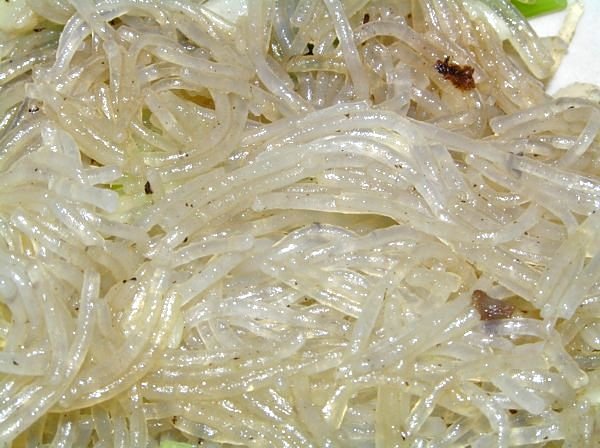Now we venture from the produce section to the noodle aisle. And yes, Asian markets do often have an entire section dedicated to noodles. You can find noodles in all shapes and types. I'll cover some of the more common varieties here.
La Mian / Pulled Noodles (拉面)
This is the most common type of wheat noodle, originating in northern China. The name literally means "pulled noodle", and it is made by pulling dough into long strands. In the grocery store, you will most likely find them dried and packed in boxes. These noodles have a long shelf life and are quite easy to cook, so I usually buy them in bulk whenever I go to the Asian market. The most popular brand and my personal favorite is Wu Mu Shandong-style La Mian, which is produced in Taiwan.
And fun fact: this kind of noodle gave its name to Japanese ramen, which is basically La Mian soaked in alkaline water to give it its distinctive yellow color and firm texture.
Dao Xiao Mian / Knife-Cut Noodles (刀削面)
The other major variety of northern Chinese wheat noodle is Dao Xiao Mian, or Knife-Cut Noodle. As the name implies, it is made by rolling the dough into sheets and then cutting them with a knife. They are broader and have a chewier texture than La Mian. They are also usually sold dried.
Udon
You've probably had these in a Japanese restaurant before. Udon are thick round wheat noodles. Unlike the other kinds of noodles, these are usually sold frozen rather than dry. Because of their thickness, they have a very chewy texture. The frozen udon is usually pre-cooked, so you don't have to boil them for long.
Somen
A Japanese wheat noodle similar to Udon, except much thinner. Since they are very thin, they cook very quickly. They come dried, not frozen. In Japan, a common summer pastime is Nagashi Somen (flowing somen), in which cooked somen is sent down a bamboo tube with running water and the diners attempt to catch them with chopsticks as they flow past.
Rice vermicelli (米粉)
These are rice noodles used commonly in southern China and Southeast Asia. They come in several different thicknesses. The thin thread-like kind are used mostly in China. Slightly thicker vermicelli is used in Vietnamese cuisine (such as in Pho). And the broad, flat rice noodles are used in Thailand to make Pad Thai and other noodle dishes. Unlike the wheat noodles, they are not cooked in actively boiling water. Rather, you place them in a large bowl and pour boiled water over it.
Cellophane Noodles / Bean Threads (粉絲)
These look like vermicelli, but they are not made with rice flour, but rather with mung bean starch. They are very thin and cook almost instantly, making them perfect for hot pot. They also absorb flavor very well. However, since they are not made from grain, they aren't very filling.
Soba
This is a Japanese noodle made from buckwheat flour. It has a stronger flavor than regular wheat noodles and has a higher protein content. It can be used in pretty much the same way as la mian.






